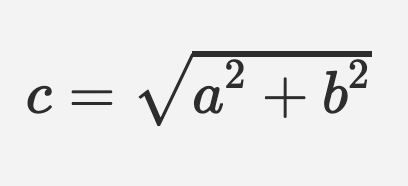1.5 Float
Ruby calls decimal numbers Floats. To create a Float rather than an Integer, just make sure to include a decimal point:
5.class # => Integer
5.0.class # => Float1.5.1 Methods
+ - * / ** (math)
The math methods work mostly like you’d expect, and similarly to the ones for integers.
The main difference to keep in mind is with /. Division with floats works the way that we’re used to — it returns fractional results, as a Float:
12.0 / 5.0 # => 2.4Try the following and see what you get:
12 / 5
12.0 / 5
12 / 5.0What did you discover? If either side is a float, float division will be performed.
This is why Integer’s .to_f method can come in handy while doing math; at some point if you need to do division and need a fractional answer, then convert it to a Float first.
One other thing to keep in mind: you can use ** in conjunction with fractions to calculate roots, since 91/2 is the same as the square root of 9, 81/3 is the same as the cube root of 8, etc.
9 ** 0.5 # => 3.0
8 ** (1/3.0) # => 2.0Open the GitPod Float project for this chapter and start with the exercise find_hypotenuse.rb:
LTI{Load assignment}(https://github.com/bpurinton-appdev/float-chapter/tree/bp-additions)[MV4dKHMwdAFhfRn752YW3TAY]{KBpPhe42o6wDRi35rWagKY4F}(20)[float_project]
For a GitPod refresher, see here.
Remember: the Pythagorean Theorem says that

where a and b are the lengths of the shorter sides, and c is the length of the longest side. Read more about the formula here.
round
Floats can round themselves. Play around with the .round method:
pi = 3.1415926535897932384626433832795028841976939937510
p pi.round(3)Return to the GitPod Float project and work through round.rb
1.5.2 Conclusion
That’s it for Float. Next up, we’ll learn to manipulate dates and times with the Date and Time classes.
Addendum: Even more Float methods
Looking for even more Float methods?
Ruby on Rails enhances certain Ruby classes with additional convenience methods that aren’t included in plain ol’ Ruby. Many of these are included in the activesupport gem that comes with Rails; you could also include it in a pure Ruby program if you wanted to.
To use the following methods within Ruby on Rails, you don’t have to do anything.
To use the following methods in a plain Ruby script, include the line:
require 'activesupport'
Formatting Floats as Strings
As we know, you can call the .to_s method on a Float to convert the number into a String:
10.25.to_s # => "10.25"Within a Rails application
Or anywhere using activesupport., you can provide a Symbol
A Symbol is a Ruby Class that is similar to a String. Symbols start with a colon (:) at the beginning. See the chapter section here. as an argument to Float’s to_s method. This allows you to convert the Float to a String and add additional formatting at the same time.
Phone
5551234.to_s(:phone) # => "555-1234"In addition to providing a Symbol to the to_s method, you can provide an additional Hash
A Hash is another Class is Ruby that. See the Hash chapter. Until you read that chapter, just be aware that this kind of formatting is possible and easy to do in a Rails application. argument to tweak the some finer details about how we want to format the Float.
1235551234.to_s(:phone, { :area_code => true } # => "(123) 555-1234"
1235551234.to_s(:phone, { :country_code => 1 } ) # => "+1-123-555-1234"
1235551234.to_s(:phone, { :area_code => true, :extension => 555 }) # => (123) 555-1234 x 555